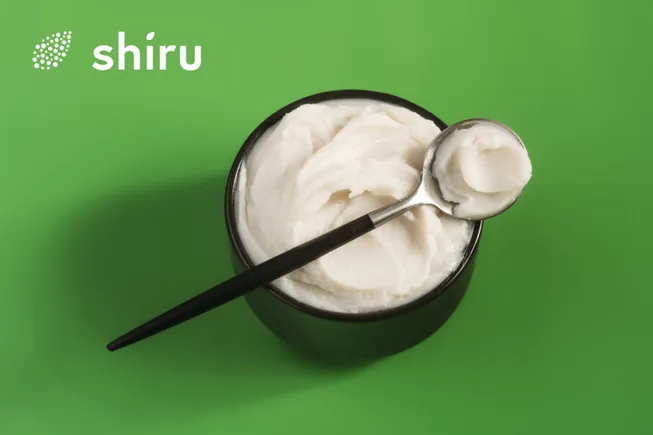A Guide to Velveting, the Secret to Tender Meat and Seafood
If you’ve ever wondered why the chicken or shrimp in a restaurant stir-fry tastes so delicious, you can likely thank velveting. This cooking technique is used widely across Chinese cuisines and beyond, helping to give proteins like pork, chicken, and shrimp a tender and, yes, velvety texture.
Though it sounds fancy, velveting at home is actually quite simple. Just a few extra minutes of prep time and some low-cost pantry ingredients can yield restaurant-worthy results. Ready to start? Here’s how to velvet.
What is velveting?
“Velveting is a Chinese method of marination commonly used for small cuts of protein,” explains two-time Top Chef winner Buddha Lo. The technique requires immersing protein, typically meat or seafood, in a combination of starch (often cornstarch), liquid, and oil for maximum tenderness and flavor absorption.
“Many proteins can work with this technique, and whatever you choose, you just have to make sure it is thinly sliced or is in bite-size pieces,” explains Lo. “Common proteins include beef, lamb, chicken, shrimp, and scallops, but you can also do this with pork, turkey, and other shellfish like lobster and crab.”
“The best, and my favorite, ways to use velveted proteins are in stir-fries.” — Chef Buddha Lo
Velveting is also a clever way to tenderize less premium cuts of meat and seafood. “Most Chinese restaurants use secondary cuts such as the collar and top side for stir-fries, which are leaner and tougher choices,” says Lo. “However, if you brine your proteins in a baking soda solution, it will tenderize these meats, making them melt in your mouth. This brine would typically happen before the velveting is done.”
Once velveted, proteins shine in countless dishes. “The best, and my favorite, ways to use velveted proteins are in stir-fries,” says Lo. “In Chinese kitchens, a large amount of oil is heated in a wok until it starts to smoke, then the thinly sliced velveted proteins are cooked in the oil. The proteins will then be added with fresh vegetables and stock, flavored accordingly and then thickened with a potato starch slurry. This technique makes sure all slices of meat have flavor attached to them.”
How to velvet at home
Velveting, like many cooking techniques, can easily be implemented at home, not just in restaurant kitchens.
To start, use a medium-sized bowl to mix seasoning, like soy sauce or oyster sauce, plus a dash of sesame oil. Then, stir in your thinly sliced protein. Add a dash of vegetable oil and cornstarch by the tablespoon, and keep mixing until the marinade coats the protein. “Remember, you can always add cornstarch, but it’s harder to take out,” Lo says. Let the velveting meat rest, at least 30 minutes or overnight in the fridge.
When you’re ready to start preparing your dish, first cook your meat briefly by blanching it in boiling water or cooking it in hot oil — Lo recommends water for white meat and oil for red meat. If you’re velveting seafood, add an egg white to the initial marinade. “Not only does this method make your seasonings stick to your protein, but it will also soak up the sauce it’s cooked in,” Lo advises.
“Remember, you can always add cornstarch, but it’s harder to take out.” — Buddha Lo
Once the exterior of the meat is cooked, transfer the blanched protein into a hot skillet or wok to season. For red meat, Lo leans towards darker sauces, like soy sauce or oyster sauce. “This gives a faster caramelization, which is crucial as the thinly sliced meat can overcook easily,” he says.
When it comes to white meat or seafood, Lo opts for salt, pepper, and pure sesame oil as flavoring. “No matter what you choose to season with, it’s important to use premium sauces that offer quality and flavor — my one-stop shop is Lee Kum Kee,” says Lo. “Whatever sauce I choose to cook with ultimately depicts what dish I am making, including its flavor, texture, presentation, and more.”
Velveting tips
Velveting is a fairly straightforward technique, and once you’ve mastered it, you can have fun with your velveting flavors and proteins. Try using mirin or sake as a liquid in the velveting marinade, switch up the soy sauce you’re using, or opt for tapioca starch, arrowroot starch, potato starch, or even baking soda as the starch.
To more easily slice your protein thinly, toss it in the freezer for about 20 to 30 minutes before cutting. The slightly frozen exterior will be easier to cut into, as the protein will retain its shape as you slice against the grain with a sharp knife.
For the most successful velveting, plan ahead. “Velveted proteins are best left overnight to marinate in the fridge and used the next day like most marinades,” says Lo.
Source link

:max_bytes(150000):strip_icc()/Female-Sushi-Chefs-FT-BLOG1124-Sushi-Mori-Nozomi-02-7b873e758e8f4945baaf4c6142f4be73.jpg)
:max_bytes(150000):strip_icc()/15-California-Wineries-to-Try-in-2025-FT-BLOG1124-4eac44740b3749d8a78d1049ba9092e7.jpg)

